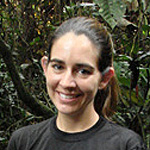
Research by Washington University in St. Louis anthropologist Crickette Sanz, PhD, and colleague David Morgan, PhD, has spurred the Republic of Congo to enlarge its Nouabalé-Ndoki National Park boundaries to include the Goualougo Triangle.
The Goualougo Triangle is a remote, pristine forest that is home to at least 14 communities of “naïve” chimpanzees with little exposure to humans.
The expansion, announced in January, increases the size of the protected area by 144 square miles to encompass 1,636 square miles of the northern Republic of Congo. The park is managed by the Republic of Congo’s Ministere du Developpement Durable, de l’Economie Forestiere et de l’Environnement with support from the Wildlife Conservation Society (WCS).

“This expansion is a great victory for scientists and conservationists because the Goualougo area and its animal populations are unique throughout the globe, and it holds great promise for further research in many different fields, including anthropology,” Sanz says.
The Goualougo Triangle, a dense lowland forest, is home to approximately 600 chimpanzees, including the chimpanzee communities studied by Sanz, assistant professor of anthropology in Arts & Sciences at WUSTL, and her husband, Morgan, research associate in anthropology at WUSTL and conservation fellow at the Lincoln Park Zoo in Chicago.
Many of the Goualougo Triangle chimpanzees are “naïve,” meaning they’ve had little exposure to humans and will investigate humans they see, rather than run from them.
Studies by Sanz and Morgan have shown that this population of chimpanzees uses a number of specialized tool sets to extract insects from nests.

For example, a stout wooden tool is used to make an entry point into a termite nest, and then a flexible probe is used to extract the termite snacks. Their discoveries were the first to show the customary use of complex and improved tool designs by wild apes.
This and other discoveries by Sanz and Morgan directly influenced the government of the Republic of Congo to increase the size of the national park to include the Goualougo Triangle and its populations of chimpanzees, gorillas, elephants, leopards and more.
“The exquisite research of Crickette Sanz and David Morgan on the chimpanzees of the Goualougo Triangle has opened a window into the cultural lives of these extraordinary beings and shown us how our own species’ actions, such as logging, are impacting those lives,” says James Deutsch, WCS director for Africa Programs.
“In doing so, they have caught the imagination of local people, the government of Congo and the whole world, helping to ensure that the Goualougo and its inhabitants will be forever secure,” Deutsch says.
Before becoming part of the park, the Goualougo Triangle was under threat of logging, poaching and encroachment by human populations. By protecting such a large area, the Republic of Congo is giving Sanz, Morgan and the dedicated team of Congolese researchers that they work with a unique opportunity to study chimpanzee communities in a large, intact environment.
“This is the best setting to document the maintenance of complex tool technology by wild chimpanzees and also understand what other aspects of their society differ from other ape populations,” Sanz says.

“Undoubtedly the Goualougo apes hold further insights for our understanding of the behavior of our closest living relatives and also that of our hominoid ancestors.”
Sanz and Morgan also study another major threat (besides poaching and habitat destruction) to wild apes: disease.
Their research in the Goualougo Triangle has helped to identify the risk factors of disease infection to local human and ape populations, including Ebola Hemorrhagic Fever and Strongyloides stercoralis, or threadworm.
Research from the area has helped scientists learn more about other diseases as well: identification of Plasmodium DNA sequences in fecal samples collected from Goualougo gorillas helped researchers pinpoint the origins of a deadly strain of malaria.

Sanz says she hopes that the ongoing research in the Goualougo Triangle will further advance humans’ understanding of ape behavioral ecology while also helping to improve the survival prospects of apes in regions still under threat.
“Working with the Wildlife Conservation Society, we’re forging new collaborations with the government of Congo and the local logging companies to document the complexities of forest and wildlife ecology in secondary habitats and across large landscapes,” Sanz says. “This will enable us to identify other ape strongholds and also develop policies to mitigate the negative impacts of logging on apes.”